Birds come in all sorts of shapes, colors, and sizes, but many of them are really hard to tell apart. Even for professionals, identifying birds from a distance can be incredibly tough. Two of the most popular birds around are sparrows and swallows, but how can you tell the difference between the two? Today, we will compare a Sparrow vs Swallow to see what makes them unique!
Comparing a Sparrow and a Swallow

| Sparrow | Swallow | |
|---|---|---|
| Wing shape | Shorter, broader wings | Long wings, pointed tip |
| Body shape | Small, round | Long, streamlined, agile |
| Diet and hunting | Mostly seeds, occasional insects | Aerial insect hunters |
| Nesting | Dried vegetation | Mud nests, often built on manmade structures |
| Coloration | Usually brown, white, black, and gray | Dark blue or green (but can come in a variety of colors) |
| Taxonomy | Passerellidae family | Hirundinidae family |
The 6 main differences between a Sparrow and a Swallow
The main difference between sparrows and swallows is that swallows are thin and streamlined, build nests of mud, and hunt insects in the air, while sparrows are shorter and stockier, build nests of vegetation, and eat mostly seeds.
Sparrows and swallows are both relatively common birds than can be found across the United States. In fact, both of these birds are found worldwide, with the distribution of the swallow even extending into parts of Antarctica during certain seasons.
Although these birds may seem similar, they have quite different physical traits, as well as divergent habits and behaviors. Sparrows are songbirds that love to eat seeds and inhabit the same places as humans. Swallows are aerial masters and have evolved to eat insects in the air that they catch through amazing acrobatics.
Today, we are going to explore the differences between sparrows and swallows in a bit more detail below. Let’s get started!
Sparrow vs Swallow: Wing shape
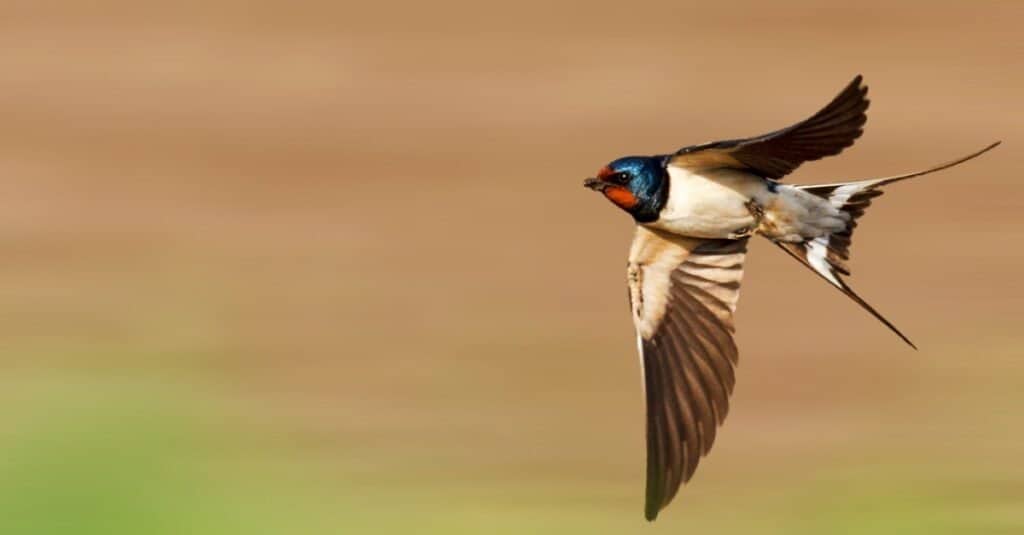
Swallows have long, pointed wings.
©iStock.com/drakuliren
There are many sparrow species, but most people are familiar with the song sparrow and the house sparrow as they are usually around homes. Most sparrows have average-looking wings that don’t have many discernable traits to them to the average person. In the New World, they have a clearly visible primary feather on each wing. Their wing shape is broad and a bit short.
Swallows, on the other hand, have distinctive wings. As aerial acrobats, they have evolved wings with pointed tips that allow for sharp cutting and swerving to catch insects while flying. Additionally, they have long forked tail segments that extend well past their normal tail feathers. While in flight, swallows are usually easy to identify due to their repeated swooping and long pointed wings. Many people get tattoos of swallows in flight due to their distinctive appearance.
Sparrow vs Swallow: Body shape
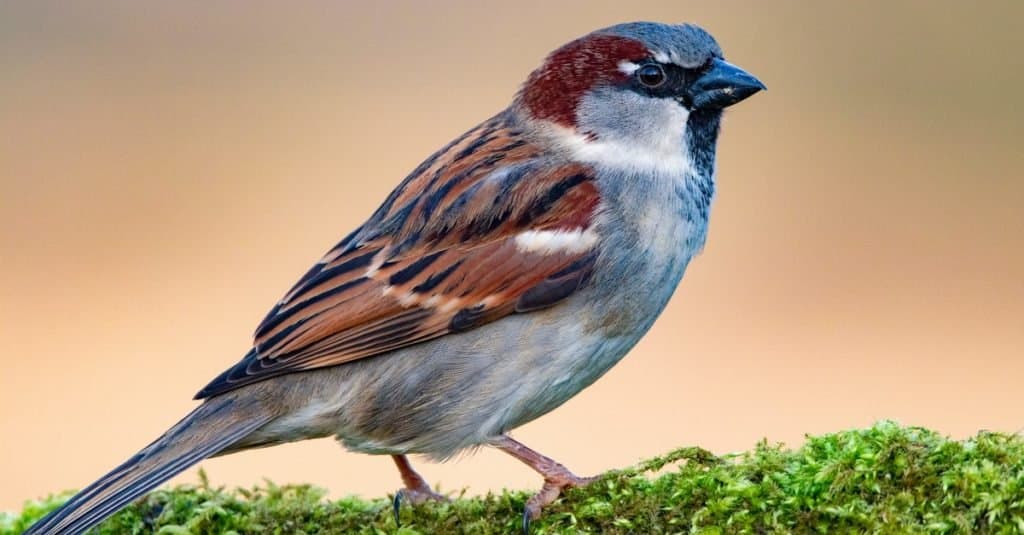
Sparrows are smaller and stouter.
©Craig Howman/Shutterstock.com
New World sparrows come in a variety of shapes, but most fall into two categories. North American sparrows are usually small and have duller coloring, while sparrows in the tropics are usually larger and bolder in their colorations. Most sparrows have tails that they carry behind them while perched and are known for flashing them often. They are generally small birds with round heads, small beaks, and small bodies. Sparrows closely resemble finches.
Swallows have slender bodies that are designed for flying. They are usually a bit larger than sparrows overall and are much less round. Their bodies are slender and aerodynamic, and their folded wings extend well past their bodies, almost looking like they blend into their tails while perched. Swallows have weak legs, rounded heads, and small beaks.
Sparrow vs Swallow: Diet and hunting
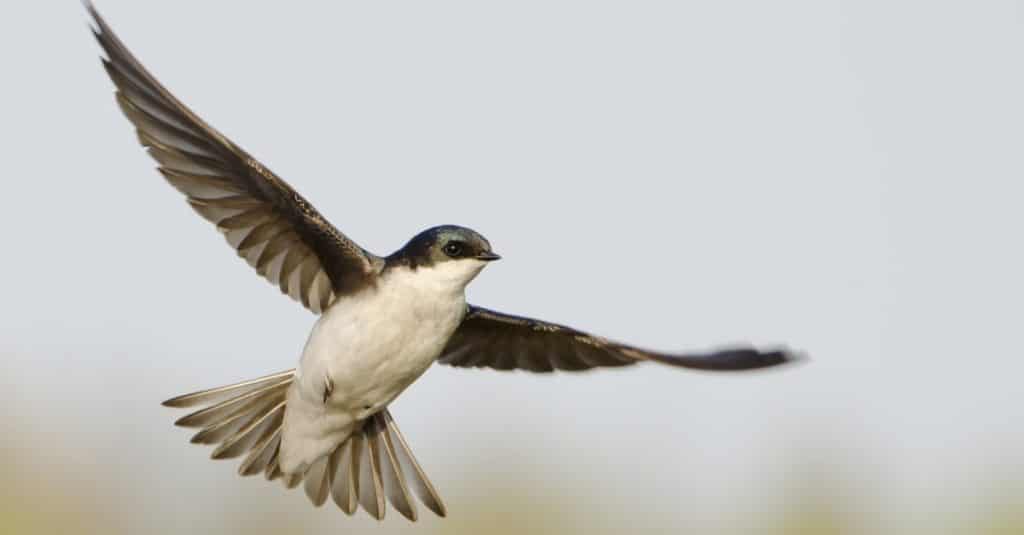
Swallows catch insects in the air.
©Chesapeake Images/Shutterstock.com
Anyone with a bird feeder in their yard has likely seen sparrows. Sparrows are primarily seed-eaters (granivores) and frequent places where they can find food in. Bird feeders, fields, forests, and backyards are all common places where they will hunt for food. Their beaks are designed for seed-eating and are thicker than a swallow’s beak. Sparrows will occasionally eat other foods like insects, but not as often.
Swallows are aerial predators that exclusively feed on insects they catch in the air. Every part of their anatomy, their long wings, gaping mouths, and streamlined bodies, are designed to help them catch insects in the air. Swallows are often seen at dusk as they swoop through the air, chasing insects destined to become dinner.
Sparrow vs Swallow: Nests
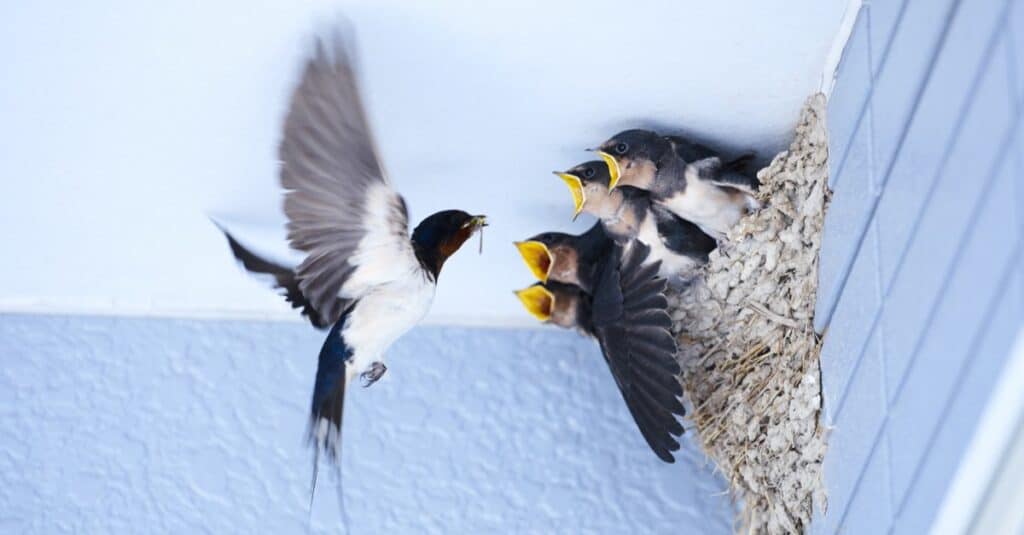
Swallows build their nests out of the mud.
©ITO_IKI/Shutterstock.com
Sparrows make nests of dried vegetation and fibers. They often place these nests in trees or around buildings, especially houses. Some have pretty open nests, but most are constructed with a single hole opening that the birds can enter through. To most people, sparrow nests are instantly recognizable as a typical “birds nest,” as they imagine it.
Swallows don’t use vegetation as sparrows do. Instead, most swallows construct their nests out of the dirt. Barn swallow nests look like open cups made out of dirt pellets, and cliff swallows build their gourd-like nests out of the mud and usually place them under overpasses.
Sparrow vs Swallow: Coloration
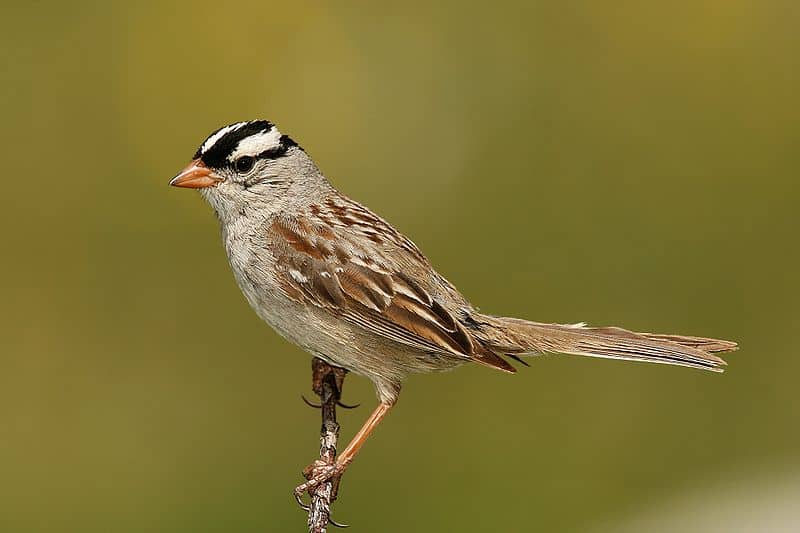
North American sparrows are usually brown, white, and black.
There are two ways to divide the common coloration of sparrows. North American sparrows (Nearctic) are usually duller, coming in shades of brown, white, and black. They often have “caps” on their head and intricate detailing across their bodies. Sparrows found in the tropics reflect their environment and come in much bolder colors of reds, greens, and yellows.
Swallows are also diverse, but there are a few colors they are known for. Their most common colorations are glossy blue or green with white bellies. For burrowing swallows or species that live in exceptionally dry and arid locations, brown is the standard color.
Sparrow vs Swallow: Taxonomy
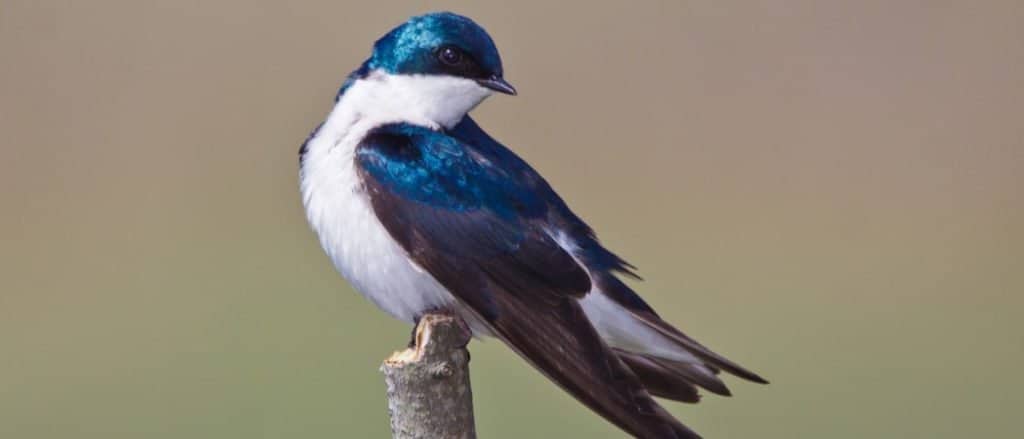
Sparrows belong to the
Passerellidae.©Elliotte Rusty Harold/Shutterstock.com
New World sparrows belong to the Passerellidae family. There are 138 recognized species of sparrow divided up into 30 genera. Sparrows in the Americas are more closely related to buntings in the Old World than to Old World sparrows themselves. Old World sparrows belong to the Passeridae family, of which there are 43 species.
Swallows belong to the Hirundinidae family. There are two subfamilies within Hirundinidae, both of which have some distinct morphological differences. These two subfamilies are Pseudochelidoninae and Hirundininae, which, when combined, have a total of 90 recognized species. Pseudochelidoninae has two species of river martin, while Hirundininae contains 24 genera and the remaining species.
The photo featured at the top of this post is © Tom Reichner/Shutterstock.com
Thank you for reading! Have some feedback for us? Contact the AZ Animals editorial team.






